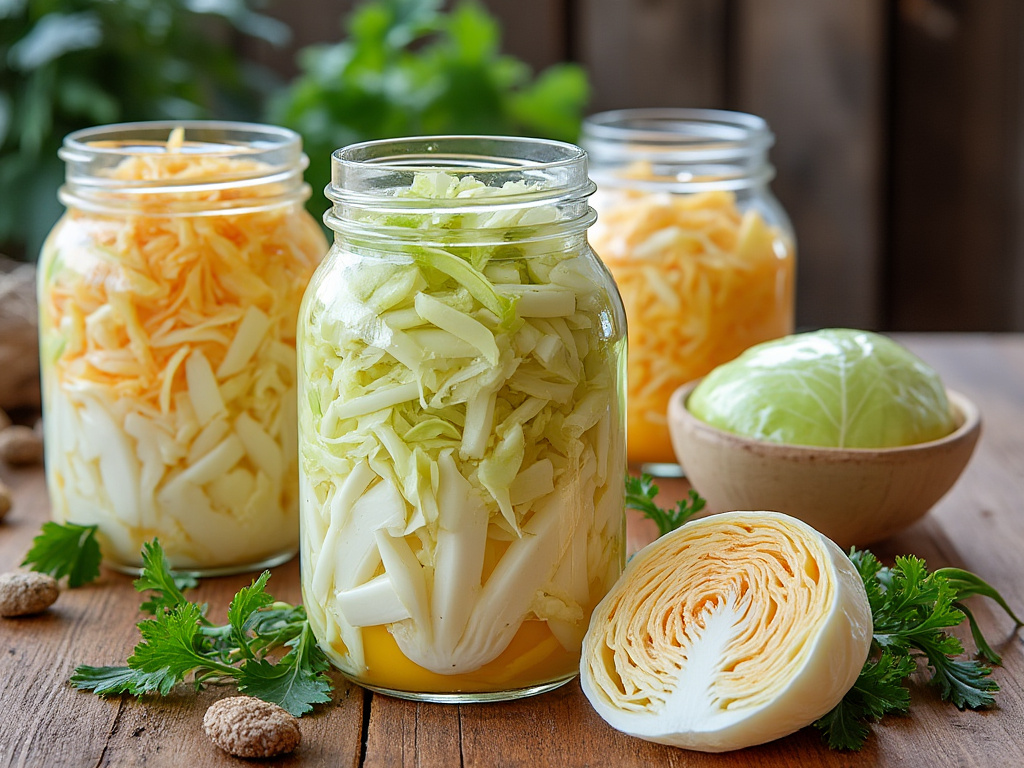
Fermentation at home is a wonderful way to preserve food, enhance flavors, and increase the nutritional value of what you eat. Here’s a basic guide on how to get started with home fermentation:
What You’ll Need:
- Fresh Produce: Vegetables like cucumbers, cabbage, carrots, or even fruits can be fermented.
- Salt: For most vegetable ferments, non-iodized salt is preferred because iodine can inhibit fermentation.
- Water: If you’re making brine, use filtered or dechlorinated water as chlorine can also interfere with the fermentation process.
- Fermentation Vessel: Glass jars, ceramic crocks, or food-grade plastic containers.
- Weight: To keep your ferment submerged in brine. You can use fermentation weights, a small plate, or even a zip-lock bag filled with brine.
- Cover: Cloth covers, fermentation lids, or any lid that can allow gas to escape while keeping contaminants out.
- Spices and Herbs: Optional, for flavoring (e.g., dill, garlic, peppercorns for pickles).
Basic Steps:
- Prepare Your Vegetables: Clean them thoroughly. You can slice, chop, or leave them whole depending on what you’re fermenting.
- Create a Brine or Salt Your Vegetables:
- Brine: Dissolve salt in water (generally, about 2-3 tablespoons of salt per quart of water for vegetables like cucumbers).
- Dry Salting: For sauerkraut or kimchi, you’d massage salt directly into the cabbage (about 1.5-2.5% salt by weight of cabbage).
- Pack the Vegetables:
- Place your vegetables into the fermentation vessel tightly to reduce air pockets. Add spices or herbs if using.
- Submerge: Ensure all plant material is submerged in liquid to prevent mold. Use weights if necessary.
- Cover: Secure your vessel with a cover that allows CO2 to escape but prevents contaminants from entering.
- Ferment:
- Temperature: Keep it at room temperature, ideally between 65-72°F (18-22°C), away from direct sunlight.
- Time: Fermentation can take anywhere from a few days to several weeks. Start tasting after a few days; when it tastes good to you, it’s ready.
- Monitor:
- Check daily to ensure vegetables stay submerged.
- You might see bubbles, which is good, or a white film (kahm yeast), which isn’t harmful but can be skimmed off.
- Storage: Once fermented to your liking, seal the jar with a tight lid and store in the refrigerator or a cool cellar to slow down the fermentation process.

Common Home Ferments:
- Sauerkraut: Fermented cabbage, great for beginners.
- Kimchi: A spicy Korean version of fermented vegetables, mainly cabbage.
- Pickles: Cucumbers fermented in brine.
- Kombucha: A fermented tea drink.
- Yogurt: Milk fermented with bacteria cultures.
Tips:
- Cleanliness: Ensure everything is clean to avoid bad bacteria, but don’t sterilize to the point where you kill off beneficial microbes.
- Taste as You Go: Fermentation is an art; your taste buds are the best guide.
- Burp Your Jars: If using airtight lids, you might need to release the built-up CO2 to prevent explosions.
Home fermentation can be quite forgiving, so don’t be afraid to experiment with flavors and ingredients. Enjoy the process and the health benefits that come with consuming fermented foods!

